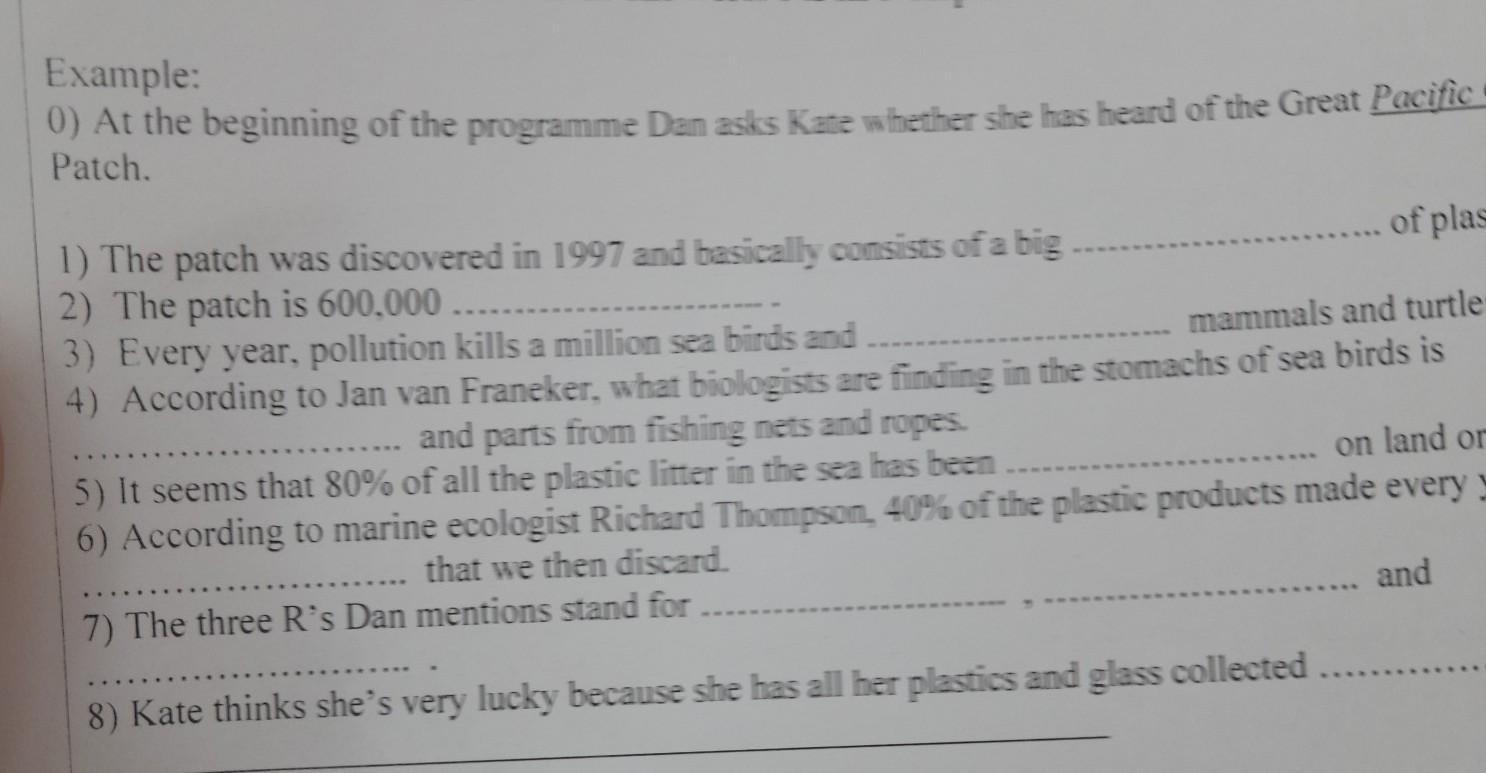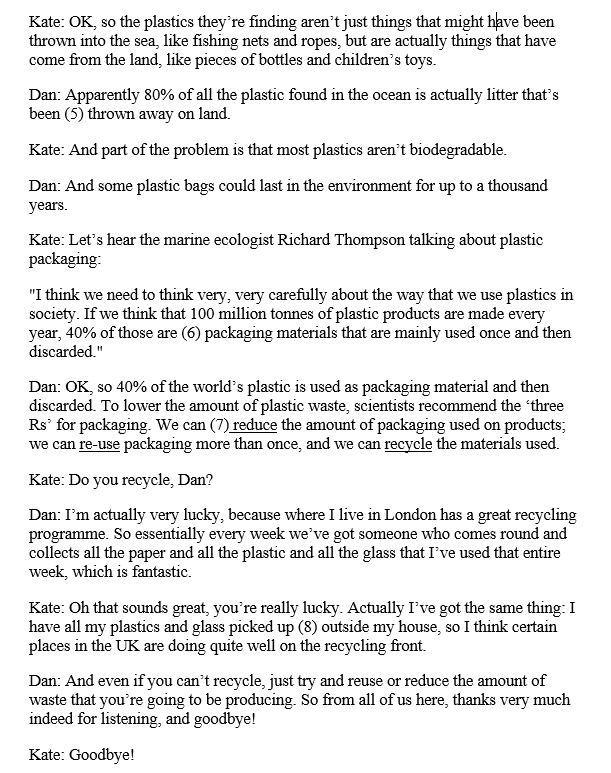1) The patch was discovered in 1997 and basically consists of a 2) The patch is 600,000 ...... 3) Every year, pollution kills a million sea birds and ......... 4) According to Jan van Franeker, what biologists are finding ....... and parts from fishing nets and ropes. 5) It seems that 80% of all the plastic litter in the sea has been 6) According to marine ecologist Richard Thompson, 40% of ..... that we then discard. 7) The three R's Dan mentions stand for .... 8) Kate thinks she's very lucky because she has all her plastic

Ответы
Ответ:
1 The patch was discovered in 1997 and basically consists of a big floating soup of plastic garbage. (Пятно было обнаружено в 1997 году и в основном состоит из "плавающего супа" из пластикового мусора.)
2 The patch is 600,000 square miles across. (Площадь пятна составляет 600 000 квадратных миль)
3 Every year, pollution kills a million sea birds and 100,000 mammals and turtles. (Ежегодно загрязнение убивает миллион морских птиц и 100 000 млекопитающих и черепах.)
4 According to Jan van Franeker, what biologists are finding in the stomachs of sea birds is bottles or toys and parts from fishing nets and ropes. ( По словам Яна ван Франекера, биологи находят в желудках морских птиц бутылки или игрушки, а также части рыболовных сетей и веревок.)
5 It seems that 80% of all the plastic litter in the sea has been thrown away on land originally. (Похоже, что 80% всего пластикового мусора в море изначально было выброшено на суше.)
6 According to marine ecologist Richard Thompson, 40% of the plastic products made every year are packaging materials that we then discard. (По словам морского эколога Ричарда Томпсона, 40% пластиковых изделий, производимых каждый год, составляют упаковочные материалы, которые мы выбрасываем.)
7 The three R’s Dan mentions stand for reduce, re-use and recycle. (Дэн упоминает три термина «R»: reduce - сокращение, re-use - повторное использование и recycle - переработка.)
8 Kate thinks she’s very lucky because she has all her plastics and glass collected outside her house. (Кейт считает, что ей очень повезло, потому что собираемые ею пластик и стекло подбирают (службы) возле её дома.)
Объяснение:
Ответы даны согласно интервью.
Dan: Hello. I’m Dan Walker Smith and today I’m joined by Kate.
Kate: Hello Dan.
Dan: Now today Kate and I are talking about pollution. So I’m going to start the show today with a question, Kate; have you ever heard of the ‘Great Pacific Garbage Patch’?
Kate: No, I’m afraid I haven’t; I’ve never heard of that.
Dan: Well, let me explain: 'garbage' is an American word for something we’ve thrown away. What we in the UK might call rubbish. And the Pacific Garbage Patch is an area of the Pacific Ocean where rubbish has collected. It was discovered in 1997, and is essentially a (1) big floating soup of plastic garbage and bits of rubbish that have been thrown away on land and have ended up in the sea.
Kate: Ooh that sounds absolutely horrible. I had no idea that anything like that existed.
Dan: Well, this is the bit which is really scary: we don’t actually know the size of the garbage patch, but some people say it could be 600,000 (2) square miles across – which is twice the size of France.
Kate: What? Twice the size of France? That’s absolutely huge!
Dan: And it could be bigger.
Kate: That’s very frightening. Now, plastic pollution in the seas kills over a million sea birds and (3) 100,000 mammals and turtles each year.
Dan: So here’s the Dutch marine biologist Jan van Franeker talking about the effects of plastic pollution on birds:
"Worldwide, there’s so many bird species that have litter in their stomachs. It varies from pieces from (4) bottles or toys, parts from fishing nets, from ropes. Any sort of plastic really that is broken up and is floating around the ocean."
Продолжение во вложении!
#SPJ1
